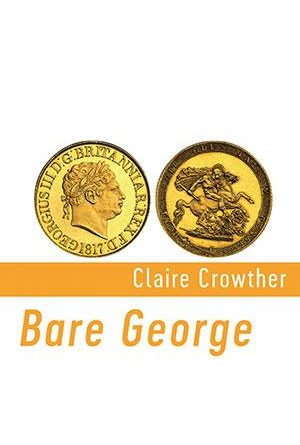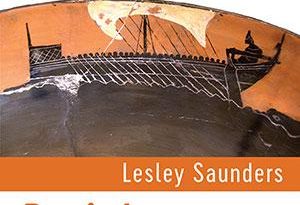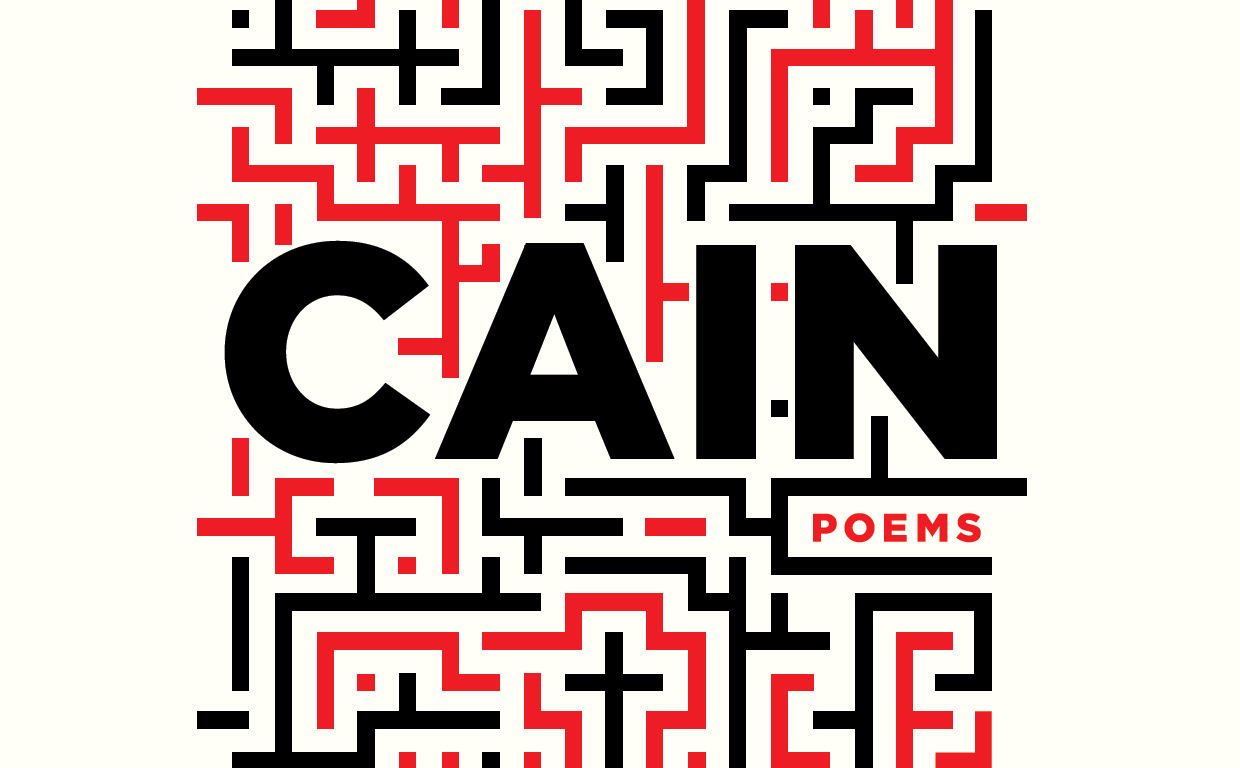Bare George by Claire Crowther
– Reviewed by Humphrey Astley –
When approaching this pamphlet by West Country poet Claire Crowther, try not to be put off by Shearsman’s garish cover design or Bare George‘s peculiar title (is it a description? is it a command? is it millennial slang?). The appeal of this pamphlet is the way it takes the most esoteric subject – Benedetto Pistrucci’s 1817 King George sovereign – and riffs on it so well. It works mostly because it’s terse, a kind of postcard from Crowther’s 2014-15 residency at the Royal Mint Museum, Llantrisant, where she learned ‘how a coin becomes the tiny artwork in every pocket’. Over the course of fifteen pages, we’re treated to a curious mind at work.
Bare George begins with Crowther telling us (via a Lewis Carroll epigram) that ‘The beast-killing principle has been carried out everywhere with a relentless monotony’, hinting at an intention to re-frame the dragon-slaying scene on the back of the 1817 sovereign. Sure enough, in the opening poem we encounter ‘the george* – its picture by Pistrucci shows a George (Saint, / of course) killing a dragon, rescuing a woman. // That’s not / my story of men’.
The asterisk (typical of the pamphlet’s recursive style) refers us to a later stanza, in which she explains what it means ‘to remelt – and to visit the furnace / that I say is famous for women’s work.’ This sets up all kinds of possible connotations: is the dragon a woman? is the cave a furnace? Never mind the frankly delicious fact that the word ‘remelt’, deployed here in the context of monarchic iconography, evokes both remnant and realm…
If this sounds like the kind of highbrow stuff that has you reaching for the remote, Bare George is probably not for you. But there are laughs to be had, too, as when the speaker claims that Pistrucci and King George ‘were pissheads both’ (‘Pissed Strucci, I say’), and some subtle interplay between the heartfelt and the hammy: ‘Oh but the cost a loss of made things make.’ There’s no ignoring the political content, and you have to applaud an artist who sees a stint at a museum in Wales as an opportunity for a feminist treatment of religious and fiscal symbolism:
Perhaps every coin made by a woman
(be she ever so unlike Mary Queen of Scots)
would be a nonsunt, would carry the inscription:IAM NON SUNT DUO SED UNA CARO
Now they are not two but one flesh.
The above is from the poem ‘Coin City’, which is followed somewhat frustratingly by the pamphlet’s most difficult piece, ‘The Map Keeper’. The problem with an opening line like ‘There is a country at hand, Uninhabitable’ is that it feels too much like an abstract premise, and that ‘we feel / they carry invisible slings // and are capable of kicking the not that would hold / them’ only exacerbates the slippery sense of negation. ‘No Dragons’ re-grounds us, however, beginning with a flashback to ‘The george’:
The skin moved on his muscle like the sun
over down land.
I’m not sure I understand the syntax here, but I like it. It feels like the product of an imperfect translation (or, indeed, an imperfect remelting), an alienness that sets the tone for the intertextual turn that follows:
He wasn’t killing the dragon, he was casting,
casting me asa dragon. Well, what did you think I was?
It seemed a giant hag-fiend, churning spite
of humble human being, held the ground.
George Meredith, Forest History
Meredith aside, it’s tempting to cite Beowulf here, as if Crowther were placing all of that poem’s antagonists into one melting pot: Grendel, his mother, and the dragon (who, in Seamus Heaney’s germane view, ‘can strike us as far less horrific than he is meant to be’ but ‘has a wonderful inevitability about him and a unique glamour’). The next poem quotes the ‘soft metal’ of coinage itself, which is ‘used to you and used by you […] to produce what you need, central to human history’ (Crowther’s italics). While the poem contains some very pleasing insights (‘Myth makes value // and takes value’), it’s sometimes unclear exactly who is speaking and why, as there’s so much going on.
The minimalism of ‘The Usual Outcome for Incomers’, then, is a relief and, while still opaque, has a cleanness reminiscent of William Carlos Williams:
The taxi’s seat belts stick
under blank
ets.[…]
empty road. New tarmac.
Later, cars
pass
‘The Coin Maker Explains’ is a seriously sexy poem: ‘I gleam green yellow with yellow / smoke (my molten- / ness) […] I am swarf sharp’; but it’s also very witty, full of puns: ‘I’m taken / for an assay.’ This is reminiscent of Angela Carter’s work (which probably featured a dragon or two, as well) and makes good use of Crowther’s syllabics. Here we see how arbitrary formal features can produce surprising and intriguing effects precisely because they liberate the poet from intention. Even better when combined with some verbal ambiguity, as in ‘When I weigh two tons, graphite / dies at the end // sever.’
The final piece, ‘Envoi’, imagines a time ‘A thousand years from now [when] a woman / Picks her sovereign up / And says: ‘How crammed this story is and what / A shallow surface for such sharp relief.” Crammed indeed – at times, Bare George feels overloaded, leaving little room to unpack the references to Caxton’s The Golden Legend, for example (one poem consists almost entirely of a Legend quotation, which is cheating a bit). But there’s much to love about this pamphlet if you’re willing to meet the poet halfway, and much that is memorable for its eccentricity and skill.




